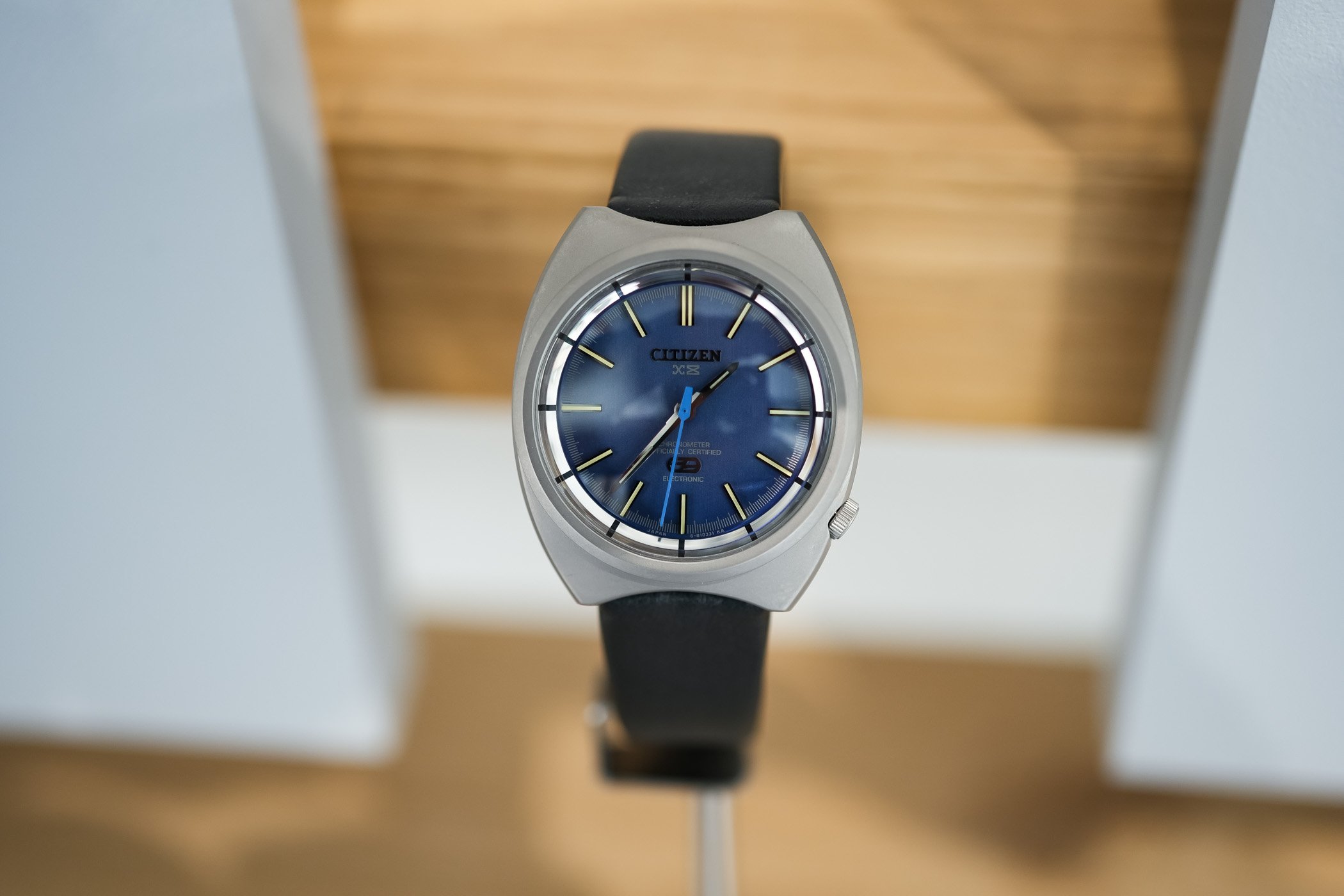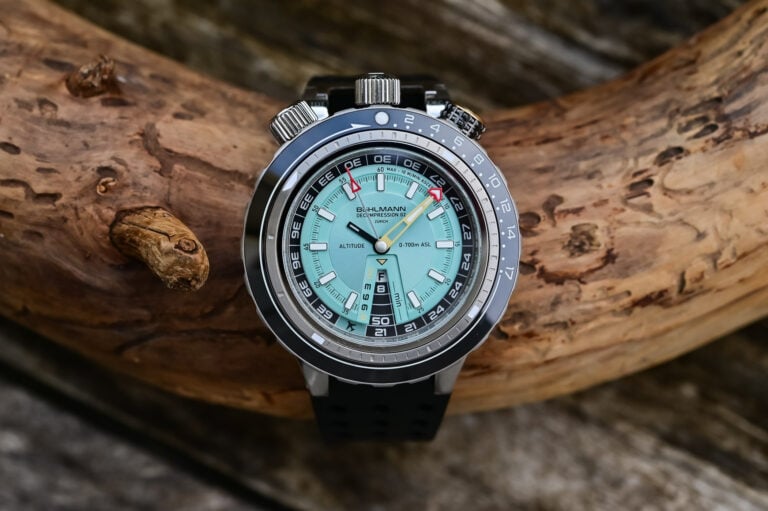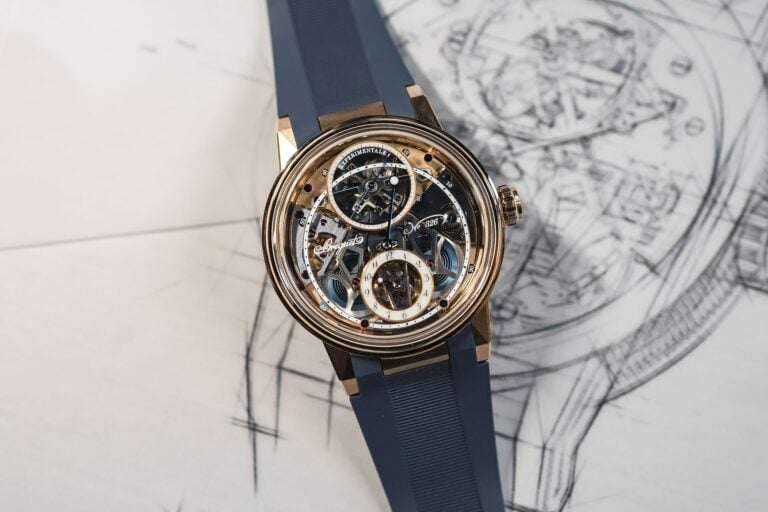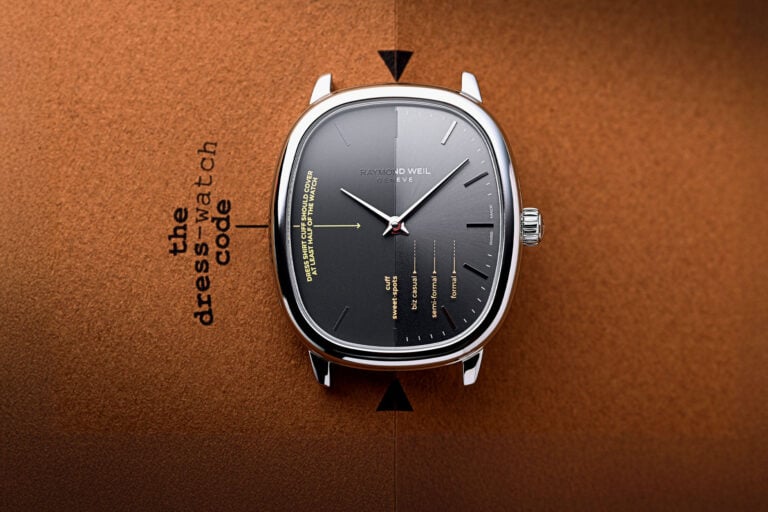55 Years After Bringing it First to Market, Citizen is Still the Master of Titanium
55 years ago, Citizen launched the first watch made out of titanium, and still is king when it comes to this material...

Citizen… The very name of the brand is highly meaningful. “Watches made for all citizens.” Last year, when we visited the exhibition retracing 100 years of the brand, it became clear to me that the brand was doing things in a very particular way. The idea behind Citizen isn’t just to be accessible; it is to bring the best watches possible, with the best technologies possible, to as many wrists as possible. And while this might sound a bit… idealistic, there is true commitment to this motto everywhere you look at Citizen. One of the technologies we need to focus on is titanium. Something that might sound like granted now was actually a proper innovation back in the late 1960s, and we should remember that Citizen was, in 1970, the first brand to commercialise a watch in titanium. This year, the Japanese manufacturer celebrates the 55th anniversary of Super-Titanium, its proprietary take on this alloy, with yet another exhibition. Perfect moment to look back at why Citizen is still the undisputed master of titanium.
The titanium revolution – 1970
For many, titanium is the ideal material for a watch. Named after the Titans of Greek mythology, titanium (used as alloys in watchmaking) offers unique properties. Titanium is lightweight, has high tensile strength, but its surface gets scratched easily. It offers excellent corrosion resistance, it is non-magnetic, non-toxic, biocompatible and hypoallergenic… There are many competitive advantages to this metal compared to steel, but titanium is not easy to use.
Back in the early 1960s, not all watches were made out of steel or precious metals. This was reserved for more high-end models and, as for accessible watches made for “the people”, it wasn’t uncommon to have cases made out of chrome-plated brass, a cheaper alternative to stainless steel, which only became the norm for watch cases during the 1970s. These brass-coated cases were prone to corrosion since the plating would peel off over time. This is when Citizen embarked on a mission to find its own alternative.

Inside the walls of Citizen’s Watch Technology Research Laboratory (yes, the brand did have that… all the way back in 1964), the brand started to look for alternative, more capable materials to craft watches. Citizen’s engineers turned their attention to titanium, which was recognised as rust-resistant, strong, hypoallergenic and light. However, working with titanium is a challenge.
Triple Trouble… Welcome titanium and the X-8
Compared to more traditional metals and alloys such as steel, gold or even brass, all relatively easy to machine and stamp, titanium is an extremely difficult metal to process. This is what Citizen’s engineers quickly discovered by trying to process titanium using the same methods as conventional metals. And soon, titanium got nicknamed “triple trouble” within the walls of the Watch Technology Research Laboratory. Titanium could not be pressed, machined or polished. It tends to stick to the mould when it is pressed, it wears down tools when it is machined, and traditional polishing techniques do not obtain a perfectly even surface.
Among the challenges it presents are low thermal conductivity, a tendency to stick to the machining edges of cutting tools, and highly combustible shavings. But Citizen’s engineers were up to the challenge and, by devising ingenious techniques to solve all these problems, they invented processing technologies that were beyond the capabilities of any other company at the time. The result: a method using a titanium first heated and then pressed. The resulting blanks had a bit of a funny look, like melted dough out of a mould. These blanks were then shaved, machined and brushed to get the desired shape and dimensions, but the brand also found the solution to polish some of the cases’ surfaces – and yes, they kept this process secret for a while. But these finishes won’t appear immediately on the market.

Back in 1970, as the first brand to ever be able to do so, Citizen introduced the X-8 Chronometer. If it wasn’t the first watch made of titanium, as Omega developed several Speedmaster prototypes for NASA back in 1968/69, within the Alaska Project. However, the X-8 Chronometer was the first watch commercially available in titanium. The watch in question was still pretty rough, with no specific signs of decoration or finishing, but it remains a highly important model that led the way to further innovations.
The evolution leading to Super-Titanium
As said above, titanium as a raw alloy isn’t particularly resistant to wear. In fact, titanium tends to form an oxidation layer when in contact with ambient air, and that layer is extremely easy to scratch. Over the years, the brand continued to experiment with titanium, pioneering new techniques to process the metal.
Thus, Citizen’s engineers sought ways to overcome one of titanium’s drawbacks, mostly to improve the rough, matte aspect of titanium and to enhance its resistance to wear. In 1987, with the launch of the Attesa collection, Citizen released titanium watches with a soft, lustrous finish. The brand’s efforts in this direction led to the invention of Duratect.
This came to reality in 2000 with the introduction of the ASPEC World Time. The culmination of Citizen’s efforts to master titanium has been the creation of Super Titanium™ – a registered trademark for a material that combines the brand’s titanium-processing technologies and the Duratect surface-hardening process. Citizen’s Super Titanium™ is lightweight (about 60% lighter than steel) and is particularly comfortable on the wrist, gentle on the skin and hypoallergenic. It is scratch-resistant (approx. 1,700 – 2,300 HV) with a surface hardness about five times superior to that of stainless steel. It is rust-resistant and can be produced in a variety of colours – unlike untreated titanium.
Below: the 10-year scratch comparison test… on the left, a clasp that’s been treated with Duratect, and on the right, a clasp in untreated titanium, confirming the benefit of Super Titanium over standard titanium.
I later asked Yoshihisa Yajima, Chief Operating Officer of Citizen, what the future was for Citizen and Super Titanium, and he explained to me that the next step, which is now visible with the introduction of a new Duratect Amber yellow surface treatment, was to play with colours. In fact, Citizen was presenting case prototypes in an array of tones, ranging from traditional black or grey coatings, to more usual colours such as sakura pink, blue or even crystalised titanium, which is a coating with texture… Also, the brand introduced a few years ago a technology named MRK, which not only improves the resistance to scratches but also to dents.
If you take the example of Duratect Amber yellow, it shows multiple advantages compared to traditional gold plating. Not only is this applied to lightweight titanium, making the watches more comfortable to wear, but also safer. Indeed, conventional gold plating often uses nickel, a common cause of allergies. In contrast, Duratect Amber yellow contains zero nickel and instead uses a niobium-titanium alloy to produce its distinctive gold colour. This gives the metal hypoallergenic properties. Being composed of multiple coatings applied to the base metal, Duratect Amber yellow provides one of the highest levels of hardness within the Duratect line-up, making it 10 to 20 times harder than conventional gold plating and providing superior resistance to scratches.
The Citizen and Zenshin… The latest Super-Titanium watches
The exhibition celebrating the 55th anniversary of titanium was also the occasion to discover the brand’s latest models made out of Super Titanium, with two major releases placed on both sides of the spectrum, one being a truly accessible take on the titanium sports watch, the other representing the best of what Citizen is capable of…
On the higher-end side of things, Citizen used the exhibition to present a duo of watches made, of course, of Super Titanium. Created to celebrate the 30th anniversary of the “The Citizen” collection, the references AQ4106-26L and AQ4100-65M were first publicly shown during the titanium exhibition. The key takeaway here is dials made using genuine washi paper dyed in a deep shade of indigo, a great tribute to the country of origin of Citizen. Both are limited editions powered by Eco-Drive movements with an annual accuracy of ± 5 seconds.
The angular cases, here produced with great attention to detail, including attractive facetted lugs, are made of Super Titanium with either a black Duratect DLC coating (AQ4106-26) or a platinum Duratect coating (AQ4100-65M), the latter giving a bright and highly reflective surface to its case and bracelet. These 38mm models also show greatly detailed dials, as in addition to the washi paper surface, these are fitted with superb hands and markers, showing wide polished bevels. These models are respectively limited to 300 and 550 pieces worldwide and priced at EUR 3,395 and EUR 3,495.
On the other side of the spectrum, in a far more accessible price range, are the new Zenshin 60 Automatic watches. A collection of 4 new watches made entirely in Super Titanium, bracelet included, which we’ve introduced in this article. And yes, Citizen has such a high level of integration and experience in titanium that the brand is capable of offering these models under 500 euros. And when I asked Mr Yajima how they were capable of doing that, his answer, accompanied by the hint of a smile, was that they had to keep some industrial processes secret, but some of the reasons behind this accessibility were a combination of in-house manufacturing (including the coating process), avoid external costs, and clever solutions such as stamping the links of the bracelet and not machining them, again to reduce production costs.
The result is, without a doubt, a collection of highly appealing models that deliver a lot more than what the price lets you think. And this is why Citizen is, arguably, one of the most capable brands when it comes to making watches in titanium. For more details, please visit CitizenWatch.eu or CitizenWatch-Global.com.

























1 response
Very, very underrated movement, I mean plus or minus 2 seconds a year accuracy for that price !!